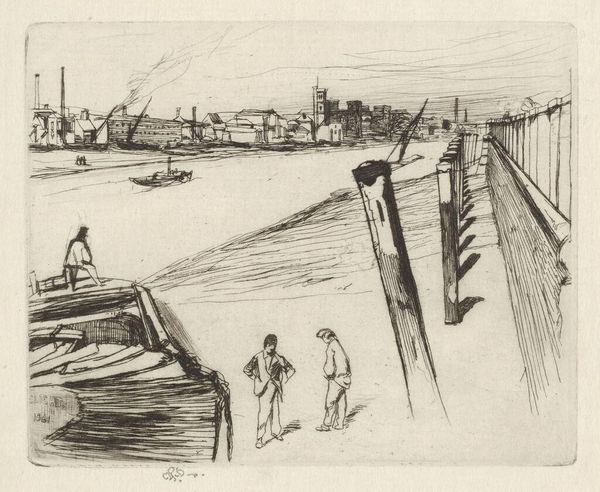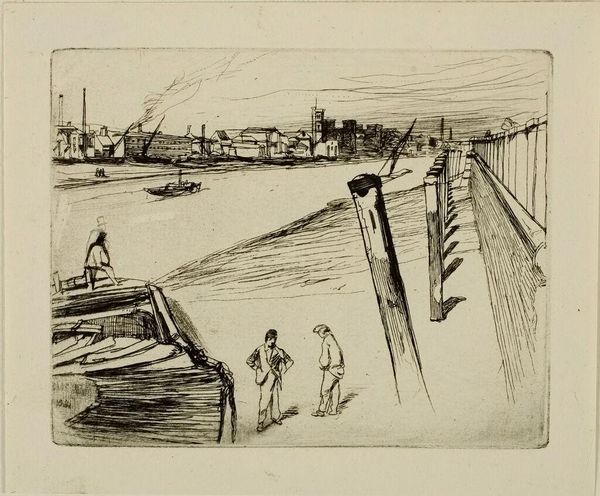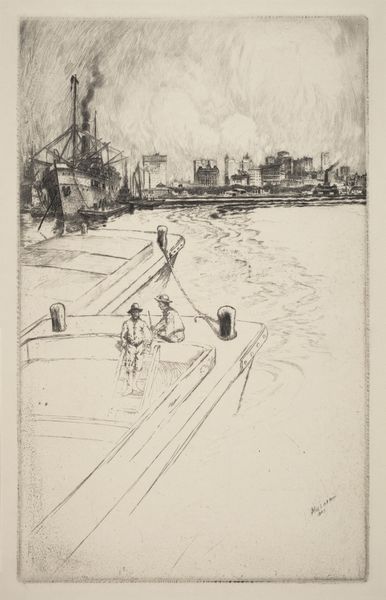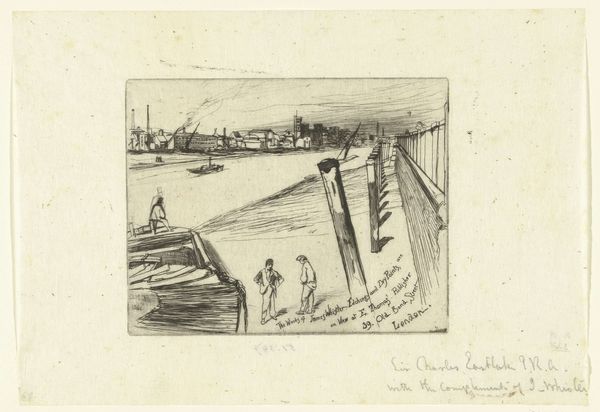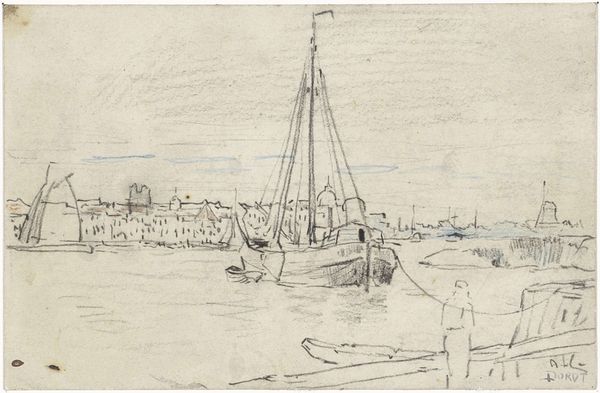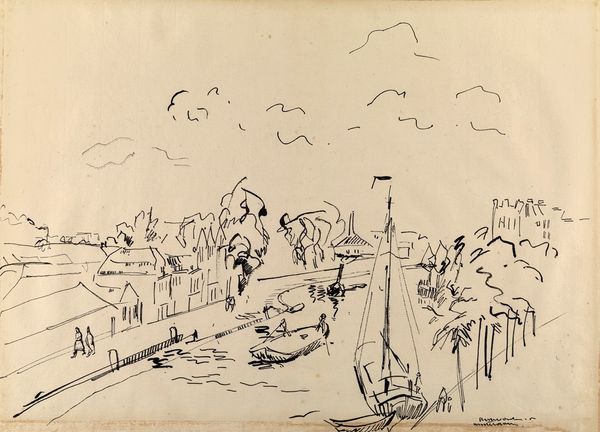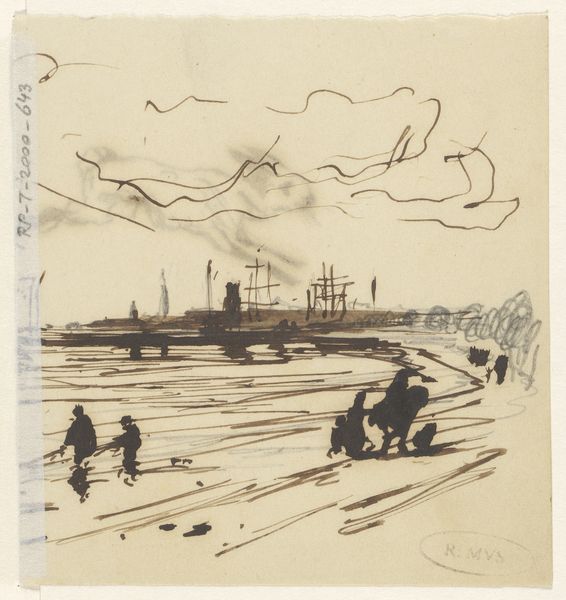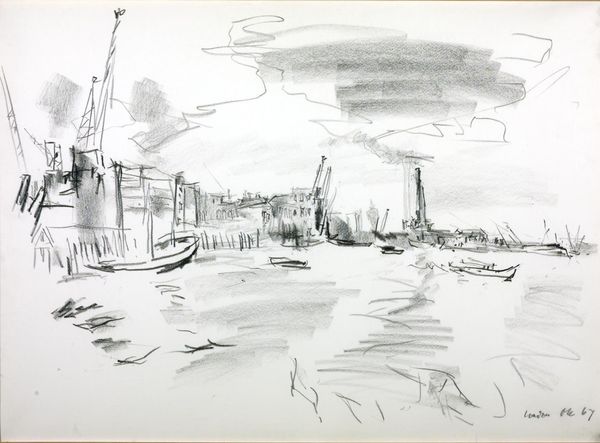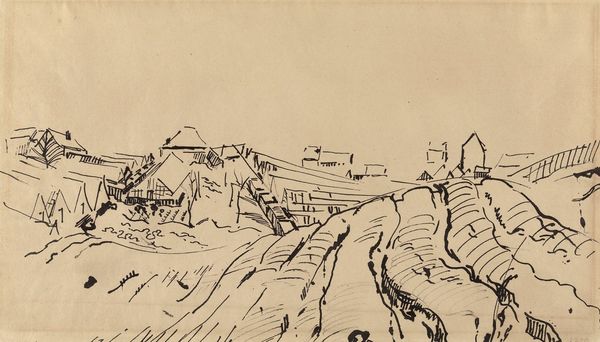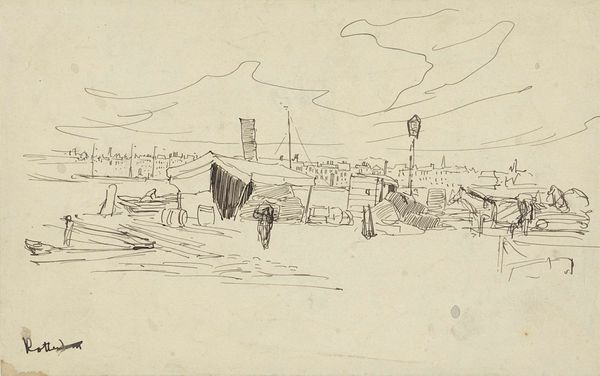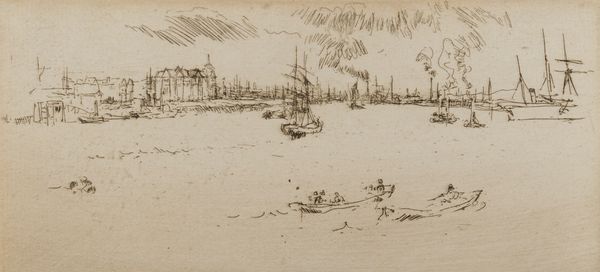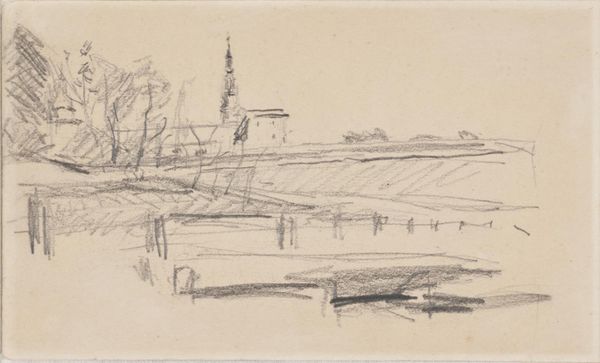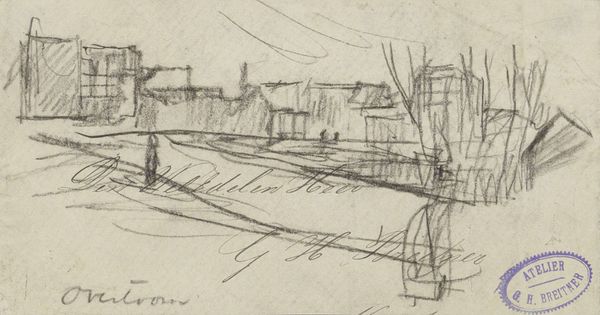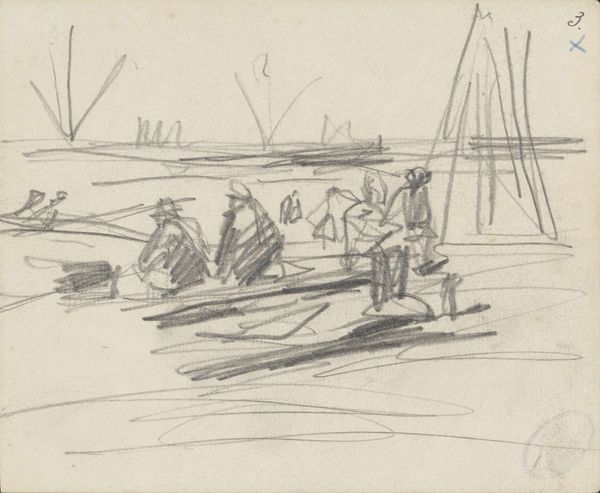
Copyright: Public Domain: Artvee
Curator: Before us, we have James Abbott McNeill Whistler's "Millbank," an etching from 1861. Editor: Immediately, I'm drawn to the pervasive mood of industrial melancholy. The crisscrossing lines of the etching give the scene an almost oppressive feeling. Curator: Yes, the image portrays a segment of the River Thames and its embankment in London. This era reflects significant economic shifts; etching becomes cheaper, easier. It becomes popular with those with burgeoning urban tastes. Notice how Whistler seems drawn to rendering the ordinary rather than grand statements of idealized Romanticism. Editor: The linear construction really highlights contrasts, especially the robust architecture on the shore against figures rendered more sketchily, evoking movement through their relative formlessness. Are the men conversing, working? Or perhaps lost in their thoughts against the changing city? Curator: It's the human relationship with work. While his contemporaries tended towards straightforward depiction of everyday realities, he seeks to find the beauty, if not in the object itself, in how we see it. Look at how we see commerce happening across the waters against men seemingly caught in their own reverie; notice his fascination with urban development, seen as signs of societal development at this time. Editor: And Whistler focuses our attention towards that liminal space between water and city, with its promise for trade—or the decay produced by such industrial activity. There’s a timelessness suggested. In our modern world it is quite easy to consider pollution's effect. Curator: Exactly. By focusing on these everyday details, Whistler invites us to contemplate how our surroundings mold our perceptions and identity. It also raises fundamental questions about urban advancement: questions which are still discussed and dissected to this day. Editor: The interplay of man, commerce, and reflection— it offers layers that I hadn’t noticed before. It really demonstrates art's powerful capacity to not only mirror reality, but also re-evaluate it in our own perception of cultural values.
Comments
No comments
Be the first to comment and join the conversation on the ultimate creative platform.
